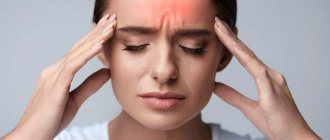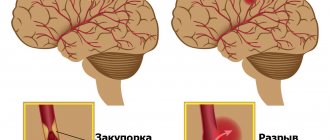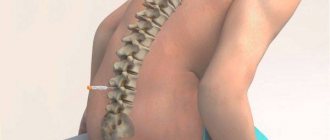Many of us, at least once in our lives, have been involved in a situation where it was necessary to provide assistance to a person who has fainted, and some have even found themselves in the role of a victim. The most common symptoms that precede the onset of fainting are most often darkening of the eyes, which may be accompanied by tinnitus, general weakness, nausea and dizziness.
Darkening in the eyes occurs quite often in people and can be not only simply a consequence of a person’s overwork, but also a harbinger of serious health-related complications.
Causes
Darkening of the eyes can be a consequence of two main fundamental reasons, the first of which is the lack of oxygen and various nutrients that should have reached the brain. The second may be pathology or disorders of the visual system.
Darkening of the eyes is often the first symptom, followed by dizziness or fainting.
More often than not, most fainting and darkening of the eyes that are common in everyday life are low-risk and do not indicate vital health problems or damage. But sometimes such phenomena indicate the development of quite serious processes in the human body and require urgent contact with doctors, where, after a thorough examination and possible confirmation of negative changes in the body, a serious course of treatment can be prescribed. However, it is worth emphasizing that the treatment will not be the consequence, which is darkening in the eyes, but the root causes that caused this failure.
Content:
- Causes
- Safe causes of darkening of the eyes
- Darkening of the eyes from disease
- Characteristics of diseases
- Local visual problems
- First aid
- Diagnosing the problem
- Preventing dark eyes
What are floaters before the eyes?
Between the retina and the natural lens is a small cavity that is filled with a gel-like substance called the vitreous.
It attaches directly to the macula, optic nerve and blood vessels. The strongest attachment is at the base of the gel-like structure, and the weakest along the retinal microvessels. It is a hydrated extracellular matrix consisting mainly of water (99%), collagens and hyaluronan (1%), organized into a homogeneously transparent hydrogel. Its volume increases during the first decade of life, remains stable until age 40, then begins to gradually decrease.
The cellular composition consists of hyalocytes, fibrocytes, macrophages, laminocytes, Müller cells and microglia. As the hydrogel ages, it gradually degenerates into a more fluid state (synchisis), with 20% liquefaction at 18 years of age to more than 50% at 80.4 years of age. This is accompanied by an increase in the mass of light-optically dense microstructures (syneresis). These inclusions, often called septa, lamellae, membranes and thin tufts, appear to be composed of natural collagenous material and gradually increase in density and irregularity.
Safe causes of darkening of the eyes
Overwork and excessive stress, which accompany the lives of most students, athletes, and some workers overloaded with responsibilities, can often lead to darkening of the eyes. With all this, there is also tinnitus, a general deterioration in hearing, loss of orientation in space, but, as a rule, there is no pain. Even with such symptoms, it is better to consult a doctor and conduct examinations for a qualified conclusion to find the cause and source of the problems, as well as draw up a plan for getting rid of the negative consequences and not repeating this in the future. Based on this, relatively negative reasons include overwork and its subtypes, as well as a reduced level of hemoglobin.
Quite often, darkening of the eyes and malaise occurs due to a drop in blood glucose levels in the case of diet, from overwork and exhausting physical activity, or in the case of strong emotions that a person experiences.
After confirmation of precisely such reasons, a person will need significant time for rest, good nutrition and a transition to a healthy lifestyle. You will also have to give up stress for a while.
Types of fainting
In medicine, there are three main types of fainting.
With neurogenic, there is a temporary disorder of cardiovascular reflexes that control the dynamics of blood in the body. This type is varied:
- vasodepressor – consequences of excessively strong emotions, stress, fear, they occur most often;
- orthostatic are caused by a sharp transfer of the body from a lying position to an upright one;
- fainting due to tight collars is explained by too high sensitivity of the carotid sinus;
- loss of consciousness in older men when urinating at night, coughing, defecating - a consequence of a sharp increase in intrathoracic pressure.
If a patient has disturbances in heart rhythm, problems with the conduction of cardiac tissue are observed, and myocardial infarction is diagnosed, then they speak of cardiogenic loss of consciousness.
If, due to sudden fear, panic, or anxiety, a person’s breathing unconsciously quickens and deepens, causing loss of consciousness, such fainting is classified as hyperventilation .
In addition, there are classifications that distinguish:
- maladaptive form - when fainting is caused by adaptation to external conditions (a person overheats, etc.);
- anemic – when the volume of hemoglobin and red blood cells drops sharply, and what remains is not enough to fully supply the brain with oxygen;
- hypoglycemic – when glucose levels in the body drop;
- extreme forms – when the body is exposed to extreme conditions: high mountain air, burns, intoxication with harmful substances, medications.
Darkening of the eyes from disease
Darkening in the eyes can occur in the morning when a person gets out of bed, with sudden movements of the body and turns of the head and torso, and also occur with strong physical stress on the person’s body. Such cases are often accompanied by headaches, nausea and vomiting. The latter signs are more serious and may be a confirmation of the following diseases:
- hypotension;
- vegetative-vascular dystonia;
- all kinds of diseases caused by infections;
- diseases of the nervous system.
Main symptoms
In this regard, we can say with a high degree of probability that if your eyes get dark when you try to stand up, then we are talking about hypotension. This disease, in addition to the above, also has the following symptoms:
- Dizziness;
- Weakness, lethargy;
- A feeling of constant exhaustion, as if at night, instead of sleep, the carriages were unloaded;
- Absent-mindedness;
- Problems concentrating;
- A veil appears before the eyes;
- Shortness of breath even with minimal physical activity;
- Memory impairment.
During hypotensive crises, which are exacerbations of the disease and usually occur in spring and autumn, fainting can also occur.
Characteristics of diseases
The consequence of hypotension is a negative effect on brain cells due to oxygen starvation. With this syndrome, blood pressure drops significantly, because of this the brain does not receive enough oxygen and its cells begin to die, which is precisely manifested by darkening of the eyes, as well as headaches and nausea. Like any other serious health problem, this requires a certain course of treatment and a review of the patient’s lifestyle.
Vegetative-vascular dystonia has similar symptoms. The causes here are extensive and require long-term rehabilitation treatment.
If the problem with darkening of the eyes is caused by an infection in the body, the doctor will prescribe antibacterial drugs, which, along with eliminating the infection, will lead to the disappearance of symptoms associated with vision, headache, weakness and lethargy.
Also, darkening in the eyes is included in the primary list of factors that may indicate diseases such as osteochondrosis, various aneurysms, compression of arteries and nerve endings. In such situations, darkening and pain occur only with certain movements and positions of the body or its parts and will most often be the first symptoms of the emerging disease.
The main types of diseases that lead to darkening of the eyes include diseases of the thyroid gland, malfunctions of the heart valves and disruption of metabolic processes in the body. In the case of such problems, the phenomenon will be only one of a whole complex of symptoms.
Treatment
Sometimes, in order to get rid of attacks, it is enough to simply change your eating habits, as well as follow a routine and devote a sufficient amount of time to sleep. Although in some cases dizziness is caused by dangerous conditions that require serious treatment.
Drugs that can be prescribed to the patient:
- Antibiotics and anti-inflammatory drugs. They are prescribed to treat otitis media, as well as infections that affect the brain.
- Antidepressants, sedatives and drugs that normalize blood flow. This treatment is indicated for patients with VSD, with surges in blood pressure, as well as for people who have suffered severe stress or are suffering from depression.
- B vitamins, calcium antagonists and drugs that improve brain nutrition. Such drugs are indicated for use by patients with hypoxia and people engaged in heavy mental work.
- Massage, physiotherapy, as well as taking medications that normalize vascular tone are indicated for patients suffering from osteochondrosis or other diseases of the cervical spine.
- Hormones should be taken by patients with disorders of the endocrine system.
- Iron supplements are prescribed to patients with anemia.
The dosage of medications, as well as the duration of the course of treatment, is determined by the doctor, based on the individual characteristics of the course of the disease.
Local visual problems
Do not forget that sometimes the cause of darkening in the eyes can be problems that are associated only with the visual analyzer itself. Among them are the following:
- visual field defects;
- violations of the integrity of the optic tract;
- optic nerve diseases.
Darkening is caused by pathological loss of visual fields. A sudden movement in this case, or a sharp turn of the head can cause such a reaction in the eye.
Patients with glaucoma and people with farsightedness and myopia also complain of similar problems after prolonged visual strain.
Problems can arise when the signal from the eyes to the brain is disrupted, which occurs when the optic nerve or optic tract becomes spasmed or paralyzed.
To determine an accurate diagnosis that will reliably show the source of the problem and possible ways to eliminate it, a comprehensive ophthalmological examination will be required, including ophthalmoscopy, refractometry and several other manipulations that the doctor deems necessary in a particular individual case.
What not to do?
If a person does not know the cause of the attack, it is prohibited to take any medications. Otherwise, you may harm your health. You should not make sudden movements, you should not quickly turn your head or tilt it down, as this can lead to a fall. You definitely need to visit a doctor or call a medical team to your home.
Squatting and bending are prohibited. You need to take the most comfortable position possible. You should not start smoking or drinking alcohol after the attack is over.
First aid
Symptoms of darkening of the eyes appear very quickly, so their manifestation can be noticed and the negative consequences of this type of incident can be minimized, including strong falls, bumping into surrounding objects, and loss of balance. If such symptoms occur, the best solution is to sit or lie down, provide fresh air, drink cold, clean water or sweet tea.
If darkening of the eyes is accompanied by fainting, then it is recommended to lay the person on his side, in order to avoid swallowing the tongue when relaxing, it is better not to raise the head, so as not to interfere with the flow of blood to the brain. It is also permissible to use ammonia or splashes of cold water to try to revive the person.
Psychosomatics of nervous tic of the eye
There is a psychosomatic theory of the development of hyperkinesis. Thus, it is believed that the movement of the eyelids is controlled by the subconscious: the eyes close when offended, unwilling to accept reality, or fear. Why? But because we instinctively close them, scared.
The famous psychologist Liz Burbo claims that a nervous tic develops in an adult whose internal tension has reached its climax. He's restrained himself for so long that he simply doesn't have the strength to continue doing this. Aggression, anxiety, fear, anger, sadness can be suppressed.
As a specialist in the field of personal development, Burbo gives advice to people suffering from tics: loosen self-control, fully express your emotions, make your desires come true, don’t try to seem better. Just love yourself, because you won’t be able to please everyone right away, accept yourself as you are.
Another equally eminent psychologist, Louise L. Hay, believes that the eye twitches in an adult with a tendency toward paranoia, who believes that he is constantly under the supervision of an all-seeing eye and is afraid of it.
Hay points out his own healing paths, which echo his colleague. You need to analyze body language and understand: both the cause and the solution to the problem are inside. If you transfer fear from the subconscious to consciousness and understand its cause, then the disease will begin to recede. Fear should be perceived as a protector, a helper, a teacher.
Both experts advise: for those who cannot identify the cause of fear, and with it the appearance of hyperkinesis, it is better to seek help from a psychologist or psychotherapist.
Diagnosing the problem
If you suspect such a problem, you should immediately consult a therapist and ophthalmologist. If this symptom is not a consequence of overwork, then a series of studies are prescribed.
These examination methods include the following four main types:
- MRI of the brain.
- MRI of the orbits.
- Computerized perimeter visual field testing, which can detect scotomas.
- MRI of the vessels of the neck and head, which diagnoses disorders in the circulatory system.
It is worth remembering that after visiting a doctor with a similar problem, a patient complaining of darkening in the eyes must be prepared for the fact that he will have to clearly answer many questions of interest to the doctor. It is necessary to describe in as much detail as possible what exactly the nature and signs of the symptoms are, how often the most serious of them or maximum darkening occur, whether the person has previously experienced injuries associated with damage to the skull and brain, and whether there have been certain diseases recently. Only after listening to a detailed answer from the patient, the doctor can prescribe the necessary examination with research from one or another specialist, and subsequently save the person from this serious problem.
Diagnosis of hypotension
If, when you try to stand up suddenly, your vision becomes dark, you must undergo a full medical examination. In this case, it is worth contacting a neurologist, who, after observing the blood pressure, will draw conclusions about the condition of the blood vessels and the causes of the disease.
You may also need a visit to a cardiologist, whose examination is necessary for a final conclusion and to receive recommendations for treatment and further lifestyle.
Correct diagnosis of the disease is the key to adequate subsequent treatment. It is after an examination by the above-mentioned specialists that it will become clear whether medical intervention is necessary at all and which drugs should be used. Or, perhaps, the situation will improve by changing the usual rhythm of life, diet, and normal physical activity.
Treatment of hypotension using traditional methods
Medications used for hypotension should only be selected by the attending physician. However, very often drug therapy in such cases is unnecessary and the specialist recommends taking regular pharmacy tinctures of medicinal herbs. Particularly effective in the case of hypotension is taking lemongrass tincture. It is recommended to drink 20-30 drops twice a day, half an hour before meals in the morning and evening.
Ginseng tincture also has an excellent effect. The course of its use is 20 days. The tincture is taken twice a day, 5-20 drops before meals in the morning and in the middle of the day.
How to quickly eliminate a tick
If your eye begins to twitch involuntarily due to extreme fatigue, reading in poor lighting, or working at the computer for a long time, we recommend using the following tips:
- Relax by closing your eyes for 10–15 minutes.
- Place cotton swabs moistened with warm water on your eyelids and leave for 5-10 minutes.
- Open your eyes wide, and then close your eyes tightly (to the point of tears). Repeat the exercise 2-3 times.
- Blink your eyes quickly for 10–15 seconds, then close them for 2 minutes and completely relax. Find the middle of the brow ridge above the twitching eye, and press on this place. Here is a branch of the trigeminal nerve that connects the skin of the upper eyelid with the central nervous system, and with such actions it can be stimulated.
You can moisturize a dry cornea with special products, available in abundance in pharmacies.










